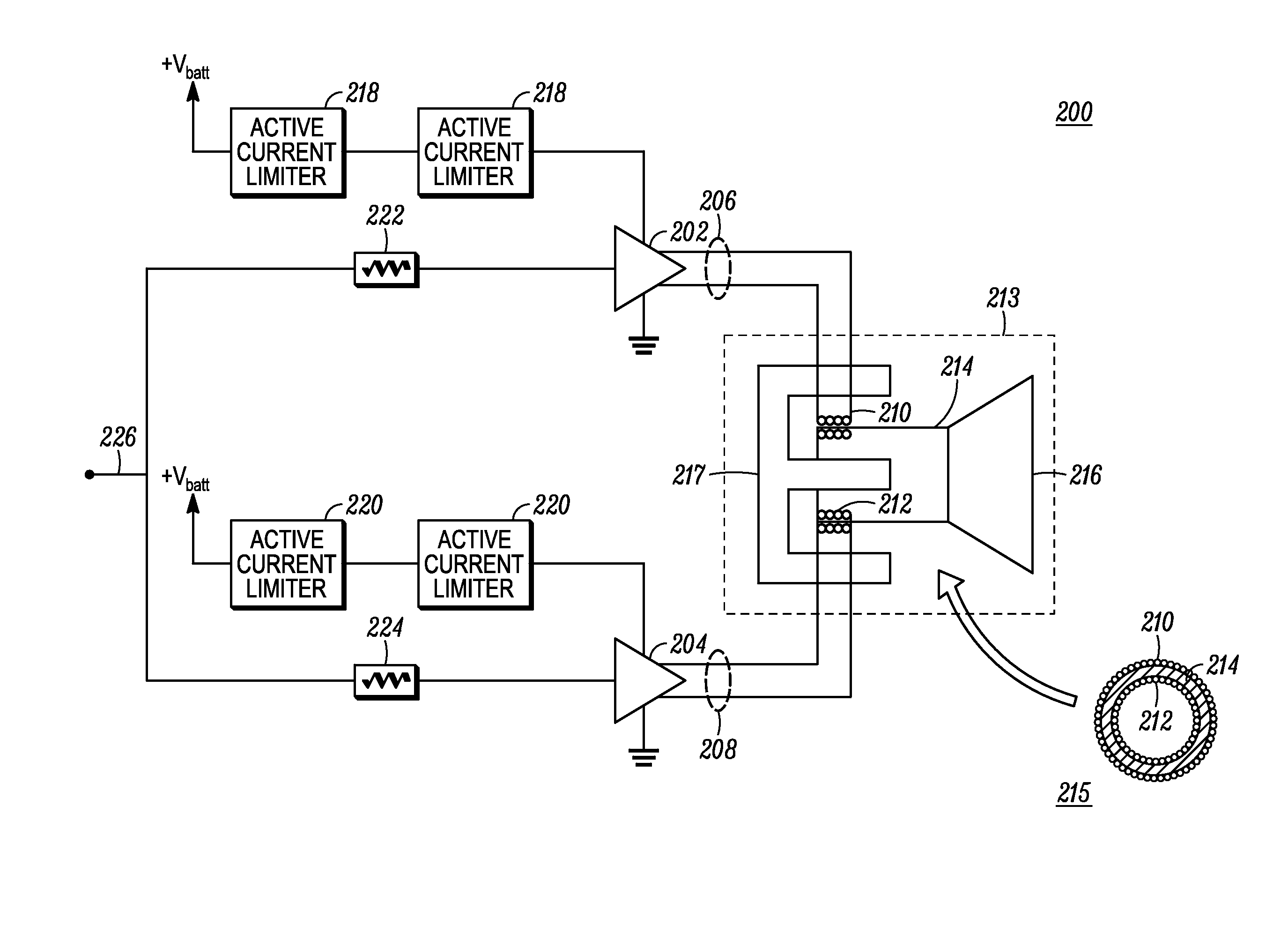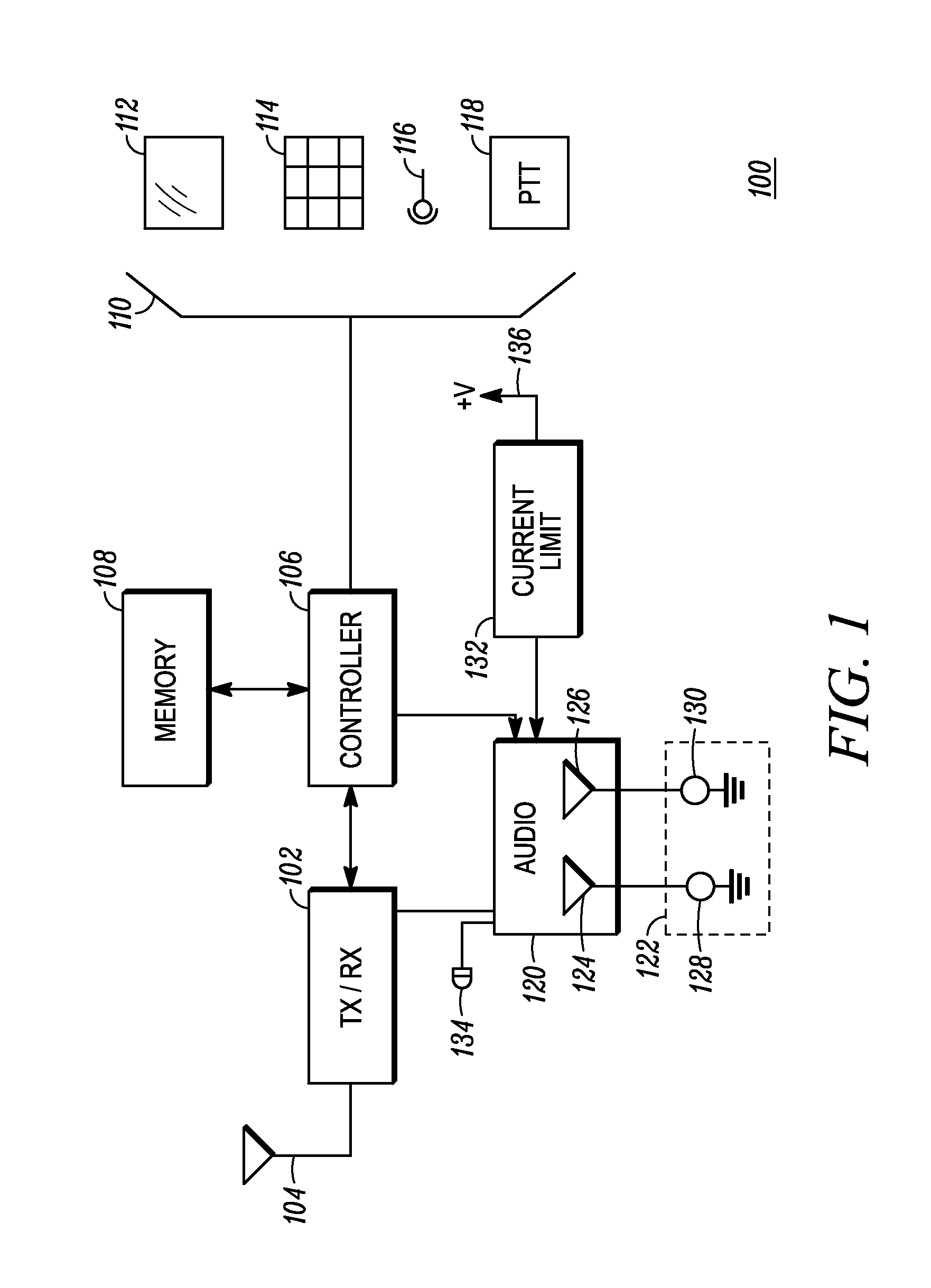Intrinsically safe audio circuit for a portable two-way radio
a two-way radio and audio circuit technology, applied in the direction of transducer details, electrical transducers, electrical apparatus, etc., can solve the problems of insufficient energy storage, small passive components, and power supply to devices or components in the device from the battery,
- Summary
- Abstract
- Description
- Claims
- Application Information
AI Technical Summary
Benefits of technology
Problems solved by technology
Method used
Image
Examples
Embodiment Construction
[0020][Reserved for claim 1 in sentence form, pending inventor and in-house counsel feedback].
[0021]FIG. 1 is a block diagram of a portable two-way radio device 100 in accordance with some embodiments. In particular, the portable two-way radio device 100 is designed to meet intrinsically safe standards so that it can be used safely in the presence of volatile gasses or other airborne matter that could be ignited. As such, great care is taken in the design, layout, and component selection for circuitry and construction of the portable two-way radio device 100 to meet intrinsically safe design standards so as to eliminate, intrinsically, the potential for either unsafe energy storage that could cause spark ignition, or power dissipation that causes component heating to a degree that could cause thermal ignition. Intrinsically safe standards are specified by various agencies such as, for example, the European Directive for Equipment for use in Explosive Atmospheres (ATEX), and the Inte...
PUM
 Login to View More
Login to View More Abstract
Description
Claims
Application Information
 Login to View More
Login to View More - R&D
- Intellectual Property
- Life Sciences
- Materials
- Tech Scout
- Unparalleled Data Quality
- Higher Quality Content
- 60% Fewer Hallucinations
Browse by: Latest US Patents, China's latest patents, Technical Efficacy Thesaurus, Application Domain, Technology Topic, Popular Technical Reports.
© 2025 PatSnap. All rights reserved.Legal|Privacy policy|Modern Slavery Act Transparency Statement|Sitemap|About US| Contact US: help@patsnap.com



